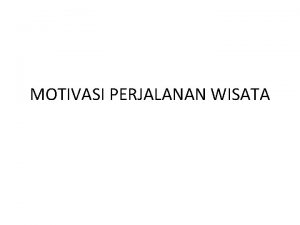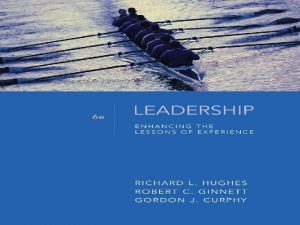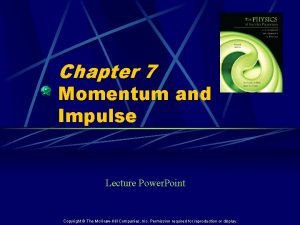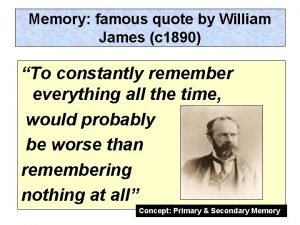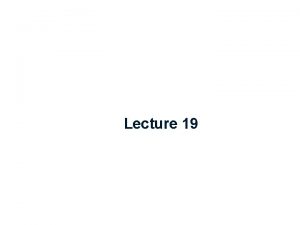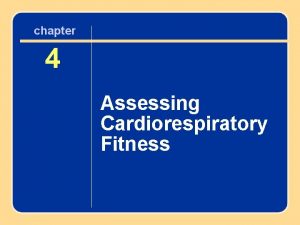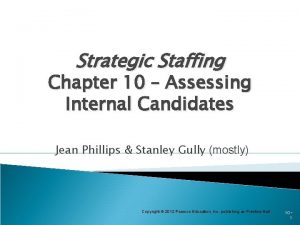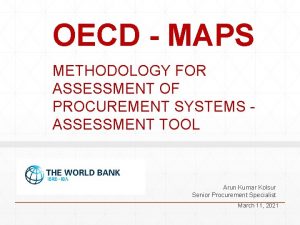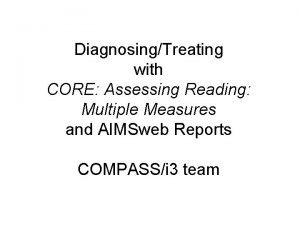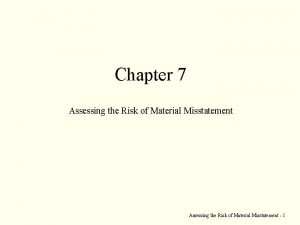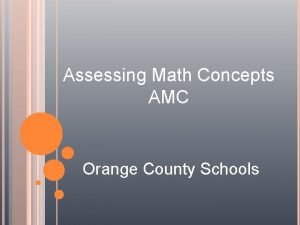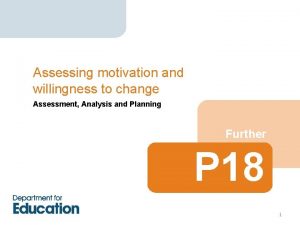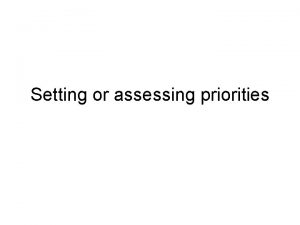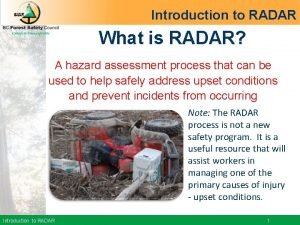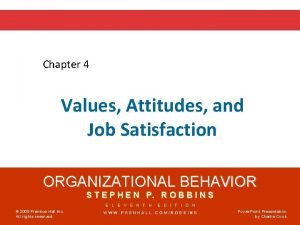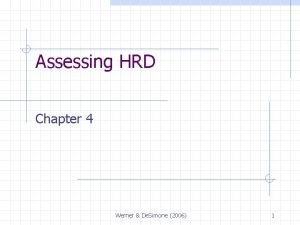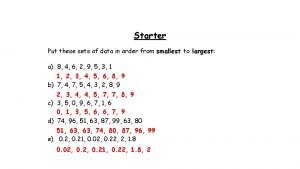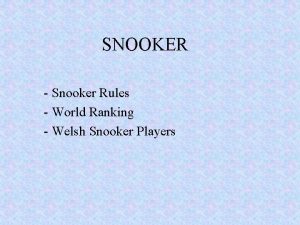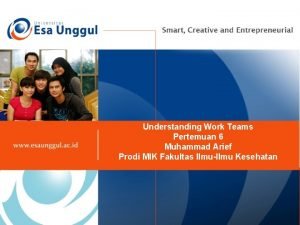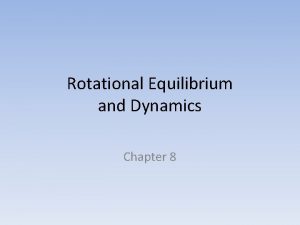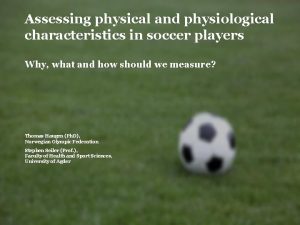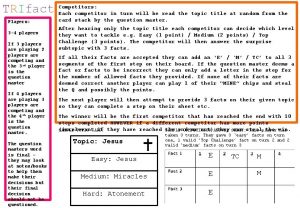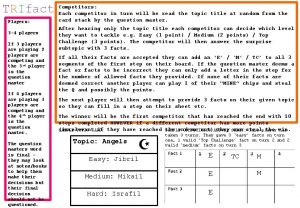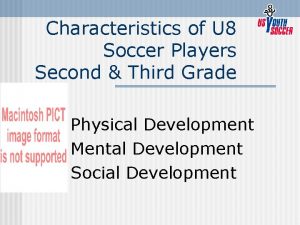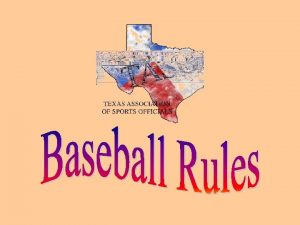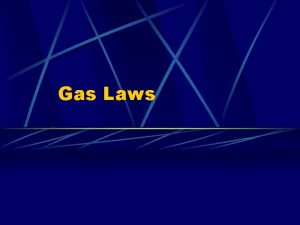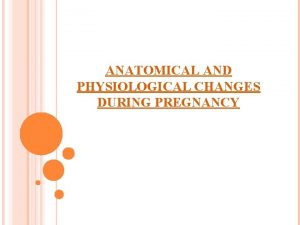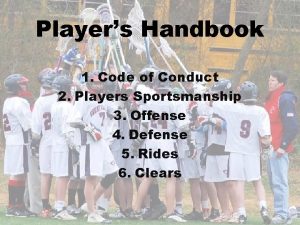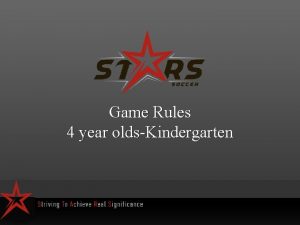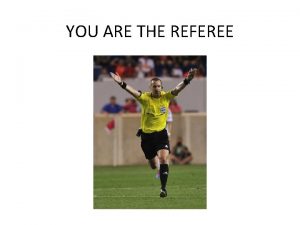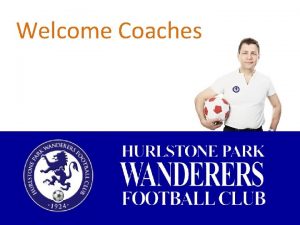Assessing physical and physiological characteristics in soccer players

















































- Slides: 49

Assessing physical and physiological characteristics in soccer players Why, what and how should we measure? Thomas Haugen (Ph. D), Norwegian Olympic Federation Stephen Seiler (Prof. ), Faculty of Health and Sport Sciences, University of Agder

Content Slide The importance of physical skills in soccer Assessing soccer players Micro-technology Aerobic demands in elite soccer VO 2 max Yo-Yo tests Anaerobic demands in elite soccer Linear sprinting speed Repeated sprint ability/performance Change-of-direction Sprint testing considerations Vertical jump Conclusions 3 5 8 10 11 14 21 23 31 35 38 43 47

The importance of physical skills in soccer • There is no direct link between physical performance and team success However: • «Anaerobic actions» precede goals • Fatigue affects technical performance and decision making • Scoring frequency increases with match duration • More injuries at the end of each half SO……

More opportunities with well-developed physical skills Perform more physical work on the field Perform physical work with higher quality (i. e. win duels, create/avoid goal scoring chances) Reduce relative match intensity and thereby avoid negative effects associated with fatigue (technical performance, decision making, injuries, etc. )

Assessing soccer players Why? • Evaluate individual and collective team behavior during training sessions and games • Develop benchmarks specific to playing standard and position • Provide a framework for individual and collective training prescription • Inform recovery strategies and load management

Assessing soccer players What makes a good test good? Valid Reliable Adds information value Minimal negative consequences

Assessing soccer players Equipment Monitoring Trend shift in monitoring technology Traditional testing Blood lactate VO 2 max Linear sprinting Intermittent running tests Agility/change of direction Vertical jump height Repeated sprint ability Gas analyzers Heart rate monitors Treadmills Force platforms Electronic timing systems Lactate analyzers Micro-technology Training load Metabolic costs Time motion Match performance Recovery status Computerized player tracking systems Local positioning systems GPS Accelerometers Purpose-built software

Micro-technology Global positioning systems Video tracking systems Local positioning systems

Micro-technology Challenges and limitations • Disagreement across systems/technologies • Work rate patterns typically predefined by absolute speed zones • Validity and reliability decrease with increasing running velocity, shorter activity duration and more changes of directions • Experienced analysts required • Expensive

Aerobic demands in elite soccer Observations from game analyses: • No relationship between game success and running performance • High-intensity running distance during matches has increased by 30% in the English Premier League the last 7 seasons • A myriad of contextual variables

VO 2 max in elite soccer Percentile 99 90 75 50 25 10 Men 74 69 66 63 60 57 Women 66 62 59 55 52 49

VO 2 max according to playing standard Values are mean ± SD

VO 2 max according to season time Values are mean ± SD

The Yo-Yo tests Yo-Yo Intermittent Endurance Level 1 Yo-Yo Intermittent Endurance Level 2 Yo-Yo Intermittent Recovery Level 1 Yo-Yo Intermittent Recovery Level 2

Yo-Yo IE 2 according to playing standard Values are mean ± SD

Yo-Yo IR 1 according to playing standard Values are mean ± SD

Yo-Yo IR 2 according to playing standard Values are mean ± SD

Yo-Yo according to season time Values are mean ± SD

Sufficient Yo-Yo test scores for elite players (group mean values) Yo-Yo IE 2 Yo-Yo IR 1 Yo-Yo IR 2 Men 2200 -2400 m 2000 -2200 m 900 -1000 m Women 1500 -1700 m More data needed Not recommended (too intensive)

Challenges with Yo-Yo tests • Did subject false start? • Did subject cross the finish line before the beep? • Subjects risk to be ruled out because of pacing strategies • Test score affected by subject motivation • Are the tests «overly» sensitive?

Anaerobic demands in elite soccer Observations from game analyses: • Mean top speed in males 31 -32 km. h-1 • ~1 sprint/acceleration per minute per match • Sprints last typically 2 -4 s • Sprints (with or without direction changes) and jumps (headings) precedes two thirds of all goals

«Mind the gap» Creating or closing a 50 cm gap can be decisive.

Linear sprinting speed in elite soccer Males (n=628) Females (n=165) PCTL 10 m (s) 20 m (s) 30 m (s) 40 m (s) PV (m. s-1) 99 1. 40 2. 58 3. 65 4. 69 9. 71 1. 55 2. 86 4. 10 5. 30 8. 55 95 1. 42 2. 61 3. 70 4. 77 9. 43 1. 57 2. 90 4. 13 5. 34 8. 33 90 1. 44 2. 64 3. 75 4. 84 9. 30 1. 59 2. 93 4. 15 5. 41 8. 20 75 1. 48 2. 70 3. 82 4. 92 9. 10 1. 64 3. 00 4. 29 5. 54 7. 94 50 1. 52 2. 76 3. 91 5. 04 8. 81 1. 69 3. 08 4. 37 5. 69 7. 65 25 1. 56 2. 83 4. 00 5. 17 8. 55 1. 72 3. 16 4. 53 5. 86 7. 40 10 1. 60 2. 89 4. 08 5. 26 8. 36 1. 79 3. 23 4. 64 6. 02 7. 19

Fastest vs. slowest players over 20 m sprint Men (n=628) 3 m 1 st PCTL 50 th PCTL 99 th PCTL 3. 5 m Women (n=165) 1 st PCTL 3. 2 50 th PCTL 3. 1 99 th PCTL 3. 0 2. 9 2. 8 2. 7 2. 6 2. 5 Time 20 m (s)

Acceleration speed (0 -20 m) as a function of playing standard Men Women Nat. team (n=49) Nat. team (n=85) 1 st div. (n=315) 1 st div. (n=47) 2 nd div. (n=158) 2 nd div. (n=29) 3. 4 3. 3 3. 2 3. 1 3 -5 th div. n=175) 3. 0 2. 9 2. 8 2. 7 Time 20 m (s) 2. 6

Peak velocity as a function of playing standard

Seasonal variations in sprinting skills Pre-season In-season Off-season 3. 4 3. 3 3. 2 3. 1 3. 0 2. 9 2. 8 2. 7 2. 6 Time 20 m (s)

Sprinting speed as a function of time epoch n Wome Men 1995 -1999 2000 -2005 2006 -2010 3. 4 3. 3 3. 2 3. 1 3. 0 2. 9 2. 8 2. 7 2. 6 Time 20 m (s)

Acceleration-peak velocity relationship Conclusion: Fast for 20 m, very likely fast for 40 m.

Assisted and resisted sprint tests Valuable for individual training prescription

Repeated sprint ability/performance • Repeated sprint ability • Fatigue index • Percentage decrement score • Repeated sprint performance • Total time • Mean time of all sprints

Repeated-sprint test protocols in soccer studies Study Krustrup et al. , 201069 Gabbett, 201041 Aziz et al. , 20072 Aziz et al. , 20083 Mujika et al. , 200981 Dellall et al. , 201329 Dupont et al. , 201033 Chaouachi et al. , 201023 Meckel et al. , 200975 Impellizzeri et al. , 200863 Bangsbo et al. , 19945 Wong et al. , 2010112 Tønnessen et al. , 2011104 Dupont et al. , 201033 Little & Williams, 200772 Test protocol 3 x 30 m 6 x 20 m 8 x 20 m 6 x 30 m 10 x 20 m 7 x 30 m 6 x 40 m 12 x 20 m 6 x 20+20 m 7 x 34. 2 m 9 x 30 m 10 x 40 m 15 x 40 m 40 x 15 m TSD (m) 90 120 160 180 200 210 240 240 270 400 600 600 Arranged based on total sprint distance (TSD) Recovery (s) 25 < 15 20 20 30 25 20 25 ~ 17 20 20 -25 25 60 25 ~ 8 -12 ~ 20 -30

Is repeated-sprint testing necessary?

Is repeated-sprint testing necessary? n=45

Change-of-direction Most typical «explosive action» in soccer games: Direction change Fast jog back to position 5 -20 m linear sprint

Commonly used COD tests Finish Start Finish Slalom test Finish Start T-test 9 -3 -6 -3 -9 m Start Sprint with 90°turns Finish Start 4 x 5 m sprint Finish Pro-agility Start L-run Start 505 Start Illinois Finish

Future sprint test recommendations for soccer •

Sprint testing considerations Timing equipment Procedures • • Starting positions • Start signals • False start regulations • Start distance behind timing device • • • Photocells • Single beamed • Dual beamed • Split beamed • Post prosessing Floor pods Audio start sensors Visual start sensors Video timing Laser guns Manual timing Environmental factors • Air resistance • Air temperature • Barometric pressure • Humidity Clothing Running surface Footwear

Starting positions A) Block start with response to sound C) Standing photo cell start B) Three-point start with hand trigger D) Standing on floor mat sensor

How do timing methods and start procedures impact the measured time? Photo cell Block start (ref. ) Floor pod 3 -point 0. 1 0. 0 -0. 1 -0. 2 -0. 3 -0. 4 -0. 5 -0. 6 -0. 7 -0. 8 40 m time diff. (s)

Time savings for 10 m sprint times across athlete groups and flying start distances 0. 5 m flying start used as reference n=44 junior soccer players (~15 in each group)

R on un ru nin bb g er spi iz ke ed s su ho rf es ac A e on rti f ru ici bb al er tur iz f ed sh su oe rf s ac e A r on ti f ar ici ti al fi tu ci r al f tu sh rf oe s Effect of shoes and surface on 40 m sprint performance

Vertical jump height demands in soccer Are vertical jump capabilities important for soccer players? Is there a relationship between leg extensor power and other soccer-related physical skills?

Relationship between sprint and jump performance R 2 = 0. 41, n= 634 Data collected at the Norwegian Olympic Training Center in the time period 1995 -2010

CMJ according to playing standard

CMJ according to time epoch

Conclusions The usefulness of physical tests for soccer Test TE (%) SWC (%) Usefulness with 1 trial VO 2 max 24, 51, 62, 66, 105 2. 0 -3. 4 1. 5 Poor Yo-Yo IE 2 9, 10, 12, 90, 96 3. 9 -4. 5 2. 4 -5. 0 Alright Yo-Yo IR 1 6, 30, 38, 67 3. 0 -8. 1 2. 0 -5. 1 Poor Yo-Yo IR 2 6, 38, 68, 80 7. 1 -12. 7 3. 6 -4. 5 Poor 0 -20 m linear sprint 49, 51, 57 1. 2 -1. 4 0. 6 Poor Maximal sprint speed 49, 51, 57 0. 9 -1. 2 0. 8 Poor T-test 90, 99, 101 1. 7 -3. 3 0. 6 -0. 7 Poor Sprint 4 x 5 m 99 4. 3 0. 9 Poor Sprint with 90° turns 99 2. 9 0. 6 Poor 9 -3 -6 -3 -9 forward sprinting 99 5. 1 1. 0 Poor Slalom test 99 2. 9 0. 6 Poor 9 -3 -6 -3 -9 backward/forward 99 5. 6 1. 1 Poor 6 x(20+20 m) shuttle sprints 63 0. 8 -1. 3 0. 3 Poor 4. 8 2. 4 Poor CMJ 24, 49

Conclusions: Does new technology move testing out of lab? • Evaluate individual and collective team behavior during training sessions and games: Micro-technology required • Develop benchmarks specific to playing standard and playing positions: Micro-technology AND traditional testing required • Framework for individual and collective training prescription: Micro-technology AND traditional testing required • Inform recovery strategies and load management: Micro-technology required

Summary of testing recommendations Physical demand Remarks Aerobic endurance A certain minimum is needed Yo-Yo more practical and valid compared to VO 2 max Linear acceleration and peak velocity Distinguishes players of varying standards Equipment, procedures and conditions are critical Change-of-direction Most sprints in games are linear Most tests do not mimic on-field movements Repeated sprinting Best sprint tells most of story Short sprints induce little fatigue, long sprints are not game specific Vertical jump A certain minimum is needed Equipment and procedures are critical
 Soccer players learn many skills when playing soccer
Soccer players learn many skills when playing soccer Soccer players learn many skills when playing soccer
Soccer players learn many skills when playing soccer Periodic table of soccer players
Periodic table of soccer players Motivasi fisik adalah
Motivasi fisik adalah Teaching and assessing grammar in the writing classroom
Teaching and assessing grammar in the writing classroom Ppst domain 4 curriculum and planning ppt
Ppst domain 4 curriculum and planning ppt Iri reading assessment
Iri reading assessment Assessing a new venture's financial strength and viability
Assessing a new venture's financial strength and viability Assessing leadership and measuring its effects
Assessing leadership and measuring its effects Module 4 topic 5 turnabouts and parking
Module 4 topic 5 turnabouts and parking Module 4 topic 1 assessing and managing risk
Module 4 topic 1 assessing and managing risk Two football players collide and stick together
Two football players collide and stick together Baddeley and hitch rugby players
Baddeley and hitch rugby players Unit 3 assessing risk in sport
Unit 3 assessing risk in sport Unit 18 assessing children's development support needs
Unit 18 assessing children's development support needs Task analysis in hrd
Task analysis in hrd Aashto manual for assessing safety hardware
Aashto manual for assessing safety hardware Cultural dynamics in assessing global markets
Cultural dynamics in assessing global markets Assessing cardiorespiratory fitness
Assessing cardiorespiratory fitness A nine box matrix requires assessing employees on ________.
A nine box matrix requires assessing employees on ________. Oecd maps
Oecd maps Core multiple measures
Core multiple measures Audit risk model
Audit risk model Amc orange county
Amc orange county Chapter 22 assessing health status
Chapter 22 assessing health status Assessing motivation to change
Assessing motivation to change Assessing opportunity cost involves
Assessing opportunity cost involves Hazard communication quiz answers
Hazard communication quiz answers Cultural dynamics in assessing global markets
Cultural dynamics in assessing global markets Assessing value for money
Assessing value for money Assessing parental capacity
Assessing parental capacity Group discussion is a modern method of assessing students
Group discussion is a modern method of assessing students Dominant work values in today's workforce
Dominant work values in today's workforce Cultural dynamics in assessing global markets
Cultural dynamics in assessing global markets Assessing the internal environment of the firm
Assessing the internal environment of the firm Assessing hrd needs
Assessing hrd needs Embouchure tips for brass players
Embouchure tips for brass players Irish baseball players
Irish baseball players Colin took a sample of 80 football players
Colin took a sample of 80 football players Snooker rules
Snooker rules The major key players on the international side are the
The major key players on the international side are the The evolution of music players
The evolution of music players Key players in tourism industry
Key players in tourism industry Which company is recognized as the inventor of cruising
Which company is recognized as the inventor of cruising The three players in the money supply process
The three players in the money supply process Why is agility important in table tennis
Why is agility important in table tennis Lorenzo neal wrestling
Lorenzo neal wrestling Team vs working group
Team vs working group Skorthom country
Skorthom country A basketball is being pushed by two players
A basketball is being pushed by two players



